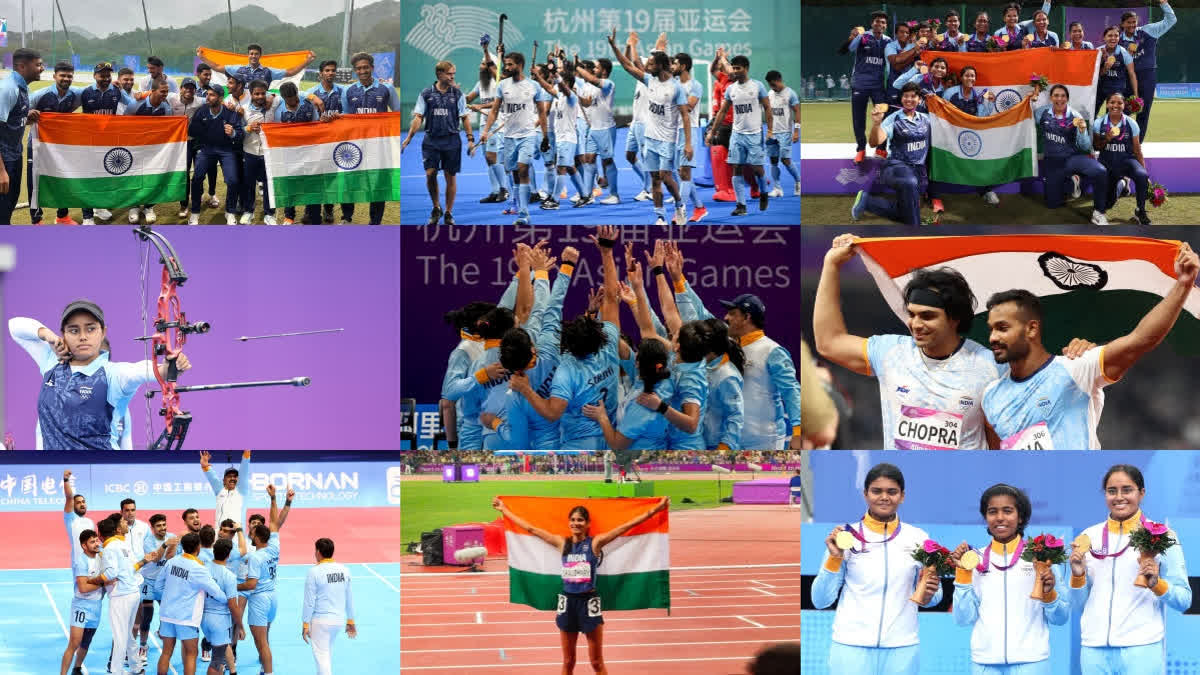The Indian contingent that participated in the Asian Games held in Hangzhou China remained true to their promise and delivered a spectacular performance, setting a historic milestone in the event's 72-year history. India clinched a remarkable total of 107 medals, which included an impressive haul of 28 gold medals. This stellar performance propelled India to an esteemed fourth place in the overall medal standings, with only China, Japan, and South Korea standing ahead of us. It was an incredible feat, surpassing our previous achievement of 70 medals in Jakarta, Indonesia, back in 2018.
This triumph underscores the unwavering dedication and resilience of Indian athletes, who continue to excel even in the face of challenging conditions. India's journey in the Asian Games began with a second-place finish in the inaugural event in 1951 and a third-place finish in the 1962 Jakarta Games. Starting with humble rankings of 5-11, the Indian team's remarkable ascent led to over a hundred medals, earning nationwide acclaim and recognition for their exceptional show. Notably, the outstanding performances of Indian archers Jyoti and Ojas Praveen, each securing three gold medals, showcased their exceptional talent and dedication. Additionally, Sathviksairaj and Chirag Shetty created history by winning a gold medal in badminton.
The Indian team's collective aggression and prowess across disciplines like Archery, Kabaddi, Cricket, Badminton, Shooting, Athletics, and more have significantly contributed to this surge in medal count. It's important to highlight that these achievements have come without substantial systemic support, and our athletes have shown remarkable self-reliance and determination.
China, with a staggering 289 medals in Jakarta last time, which included 132 golds, continued its dominance at Hangzhou with a whopping 383 medals out of which 201 are gold. To put this in perspective, Bihar, one of India's states has a population of approximately 13 crore people. In comparison, Japan, with a population of 12 crore people, secured a total of 188 medals, including 52 golds. While the state of Odisha, has a population of nearly five crore people, South Korea which has around the same population boasts 190 medals, including 42 golds. India, with a population exceeding 140 crore, still faces significant uphill battles on the road to sporting excellence.
China, a perennial powerhouse in the world of sports, has consistently maintained its dominance since the 1982 Asian Games, which were hosted by India for the second time. China's unparalleled success can be attributed to its meticulous approach to establishing numerous gymnasiums across the nation and identifying and nurturing exceptionally talented youngsters from a very tender age. This commitment to sporting excellence has been a crucial factor in their enduring reign at the top of the medal tally. Japan and South Korea, trailing closely behind China in the medal count, have also demonstrated remarkable success in the world of sports. Japan's strategy revolves around embedding a love for sports in children at an early age by ensuring that nearly every school has access to a playground.
This approach, combined with ample opportunities for training in various sports like baseball, golf, motorsports and tennis, has paved the way for the emergence of international athletes. South Korea, on the other hand, has implemented a unique system akin to the 'China model,' focusing on providing scientific training to young sports talents, much like refining rough-cut diamonds. Additionally, South Korea's requirement for men to serve in the military for 18 months by the age of 28, with exemptions for Olympic or Asian Games medalists, has further incentivized sports excellence.
South Korea boasts one of the world's most active sports economies, solidifying its position as a sports powerhouse. What emerges from these success stories is the emphasis that these nations place on building a robust sports infrastructure from the grassroots level. They understand that sports serve as a source of self-confidence and mirror national growth. This approach has earned them accolades on global stages. To replicate such success in India, a similar system should be developed in each Indian state, with a focus on providing athletic facilities, infrastructure, and adequate incentives to exceptionally talented individuals. India, with its abundance of natural talent, has the potential to produce numerous sporting stars if provided with institutional support. This comprehensive approach would not only quench India's thirst for medals but also foster a culture of sports excellence, reflecting the nation's growth and vitality on the global stage. (Eenadu editorial published on October 9)


